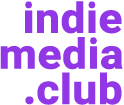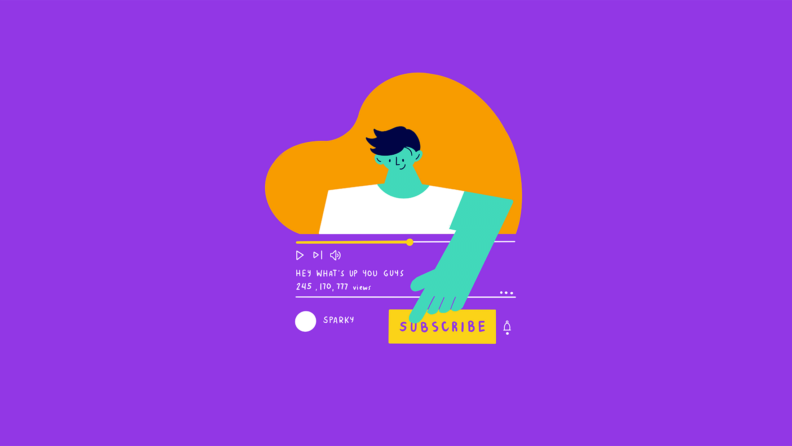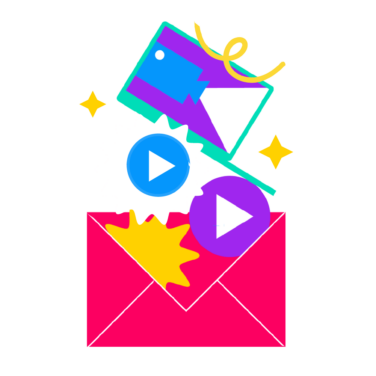One of the biggest questions many aspiring YouTubers have is “how hard is it to grow a YouTube channel”?
The brutal answer: Quite hard.

Growing a YouTube channel takes a lot of work, especially during the beginning. No one knows who you are, and YouTube won’t show your channel in seach results since you’re brand new.
People are reluctant to subscribe to a channel with no social proof, no social media presence, and 0 subscribers.
Yet, I often see many aspiring YouTubers point to feel-good stories and huge influencers to downplay the difficulties of growing a YouTube channel.
They look at former Patreon software engineer Jarvis Johnson, who transitioned to being a full-time YouTuber when his comedy channel exploded to over one million subscribers in two years.
Or these new aspiring YouTubers see the instant success of real estate millennial Graham Stephen, who hit one million subscribers in just two years.
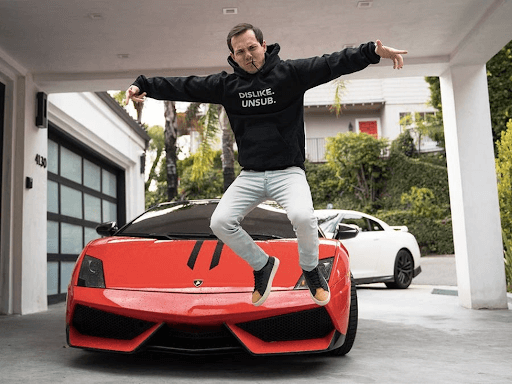
Or gaming channel Girlfriend Reviews, who came out of nowhere in 2019 and also passed one million subscribers in less than 18 months in 2020.
But these stories are the rare exception, not the norm. The 0.001%. The reality is that most YouTubers struggle to get their first 1000 YouTube subscribers.
The Reality Of Growing A YouTube Channel
YouTube marketer and growth specialist Nick Nimmin said that, on average, the average YouTuber had 157 videos before hitting 1000 YouTube subscribers. On average, it takes anywhere from 4 to 12 months for a channel to pass the 1000 sub milestone.

Of course, some YouTubers passed the 1000 sub mark much faster without posting over 100 videos or in less than four months. For the vast majority of YouTube creators, however, the struggle to grow a brand new channel is real.
The aim when first starting shouldn’t be to get one million subscribers or become the next YouTube superstar. Rather, it should be to grow from 0 to 1000 subscribers.
The Golden Number: 1000 Subs
Why is this 1000 subscriber milestone the golden number?
To make money off YouTube through its ads program, YouTube channels are required to have over 1000 subs and 4000 watch hours a year.
Hitting 1000 subs is a great feeling. It unlocks monetization on the platform. Making a little bit of money per month from ads motivates YouTubers to push towards 10k and 100k subs.
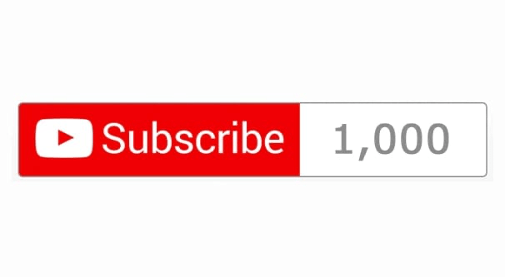
Seeing four-digit subs also shows that you built a community that genuinely likes your channel and wasn’t built off sub-4-subs (please don’t do this!).
Getting to 1000 subs is both manageable and a big accomplishment for brand new YouTubers. This milestone is a good, first goal to aim for in creating a successful YouTube channel.
Now the next question: how do you grow a channel from 0 to 1000 subs?
Here’s where I come in. I've worked with several brands and helped grow their YouTube channels to over 100k subscribers. I have also grown my personal channel to nearly 10k with a very engaged audience.
We’ll go over the step-by-step, no BS, no fluff strategies I used to efficiently grow a brand new channel to the four-digit milestone.
Let’s get into it!
How To Grow Your Youtube Channel From 0 To 1000 Subscribers
1. Pick A Niche And Stick To It
One of the biggest mistakes newcomers make is talking about everything on their channel. They’ll talk about anything that interests them, from skiing and cooking to movies and investing.
This is also a common mistake with vloggers, as they talk about anything in their life without any clear sense of a specific niche.
I know this first-hand, as I made this mistake and instantly destroyed my first YouTube channel’s growth.
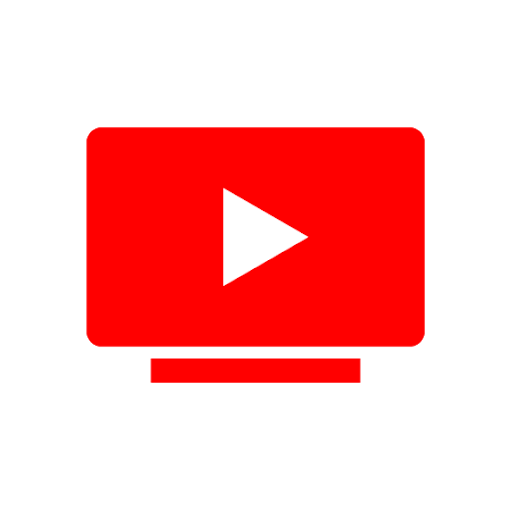
Why Not Having A Niche Is Bad
Laser focusing on one niche when first starting out is essential to growing.
The problem with talking about multiple topics is viewers will be confused about what your channel is about. It’s akin to McDonald’s one day announcing that they’ll be serving sushi and Japanese food.
Everyone knows the fast food chain specializes in burgers, fries, and milkshakes. McDonald’s customers will be confused by this new change in menu. If they wanted Japanese food, they would go to an actual Japanese restaurant.
This is the same concept with niching down on a YouTube channel.
Going back to the first example, if a viewer subscribes for a person’s cooking videos, they’ll be interested only in cooking-related videos.

If a viewer is then bombarded with other random videos, they’ll skip those videos since they don’t interest them. When a viewer sees too many unrelated videos, they will most likely unsubscribe and not return to your channel.
Also, when viewers skip a majority of a channel’s YouTube videos, this will hurt their click through rate (CTR) on the platform.
CTR is how often a viewer clicks on your video. If this percentage is too low, the YouTube algorithm demotes your video and won’t show it on its recommendation feed, nor in search.
To make a channel’s message crystal clear and keep CTR high, niching down is the best strategy, especially for brand new channels.
2. Get TubeBuddy
Having trouble knowing which keywords to target? Or which phrases have a lot of competition on YouTube?
Enter TubeBuddy.
TubeBuddy is one of the most useful tools for YouTube channels. By using its keyword tool function, it gives a lot of information to creators.
The tool shows users the most competitive YouTube search terms in a given niche, recommended search terms to aim for, and how much traffic a search term receives.
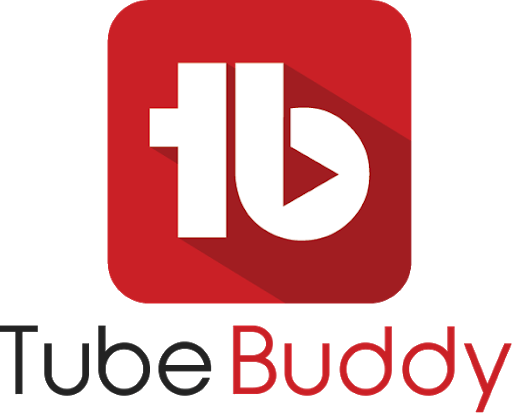
This app saves YouTubers a lot of time in searching for keywords and shows how well the competition is doing in a niche. Rather than shoot in the dark and guess what phrases may work, TubeBuddy shortcuts this guesswork.
Choosing the right keywords and phrases is a major step to cracking SEO for YouTube. YouTube is currently the second largest search engine in the world, just below Google, with a staggering three billion searches a month.
TubeBuddy helps YouTube creators easily optimize and tweak their channels.
This app is recommended by many YouTubers for these reasons. It is also free to download, with additional features for premium membership.
3. Spend Time On Your Video Title And Thumbnail
The commonly-used saying of “first impressions are very important” is true in many cases.
YouTube is no exception. The first things that a viewer will see when perusing YouTube are a video’s title and thumbnail.
If the video’s title and thumbnail are enticing and appealing, and a viewer is interested in that topic, a viewer may click on that video. This increases a video’s CTR.
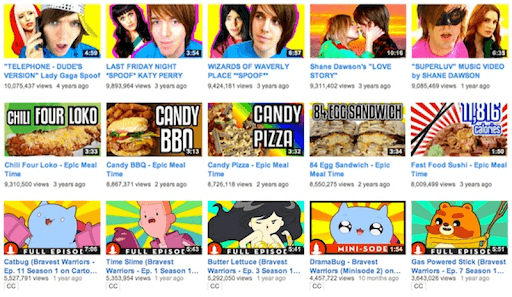
Thumbnail Credits: Tubefilter
On the other hand, if the title and thumbnail aren’t eye-catching, viewers will simply skip that video and check out others. If a lot of people skip over the video, this will damage the video’s CTR.
Since having a high CTR is so important to getting your videos recommended more and growing your subscribers, spend some time on each video’s title and thumbnail. It’s recommended to spend anywhere from one to three hours on creating a custom thumbnail and title.
For non-graphic designers, using Canva makes creating eye-catching thumbnails a lot easier. It’s free and easy accessible. Graphic designers can use Adobe Photoshop and Illustrator to produce some great thumbnails.
4. Promoting With The Right Social Media Channels
Not all social media channels are equal, especially when first starting out.
Most newcomers promote their videos using every social media channel, from Twitter to Instagram. They promote their videos on their Facebook feeds and share them with friends and family.
The thinking is that “if I promote my video everywhere on social media, people will notice my awesome videos, check them out, and share them with others.”
Sadly, blindly promoting videos this way very rarely works. YouTubers often get little to no traffic doing this.
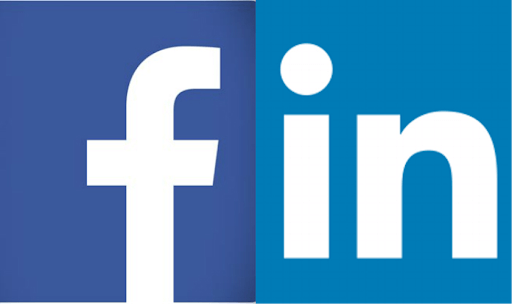
The major reasons why are a lack of social proof and few subscribers on new YouTube channels. Most people will only subscribe to channels that are already popular or if they’re really interested in a channel’s topic.
A better way is to find social media channels with a built-in, engaged audience. A platform where, even with no subscribers, if creators share quality content, people will engage and share those videos.
Digital marketing is important for promotion, but there’s a more effective way than just shotgunning your video to every social media platform.
From personal experience, the best places to share content are Facebook groups (not Facebook pages), LinkedIn, and Reddit.
Facebook groups are very effective for sharing to engaged groups. There are groups in many niches, from traveling and cooking to video games and movies. The best part is very few YouTubers know about this.
When sharing on Facebook groups, make sure to promote only your best, highest quality videos (see point #6 for quality videos). YouTubers that promote underwhelming, fluff content won’t be shared on these groups. Worse, these creators damage their reputation on these groups, so it’s best to avoid posting bad content.
LinkedIn is another great place to promote. People often associate the platform as a professional portfolio that’s only used to find jobs and network.
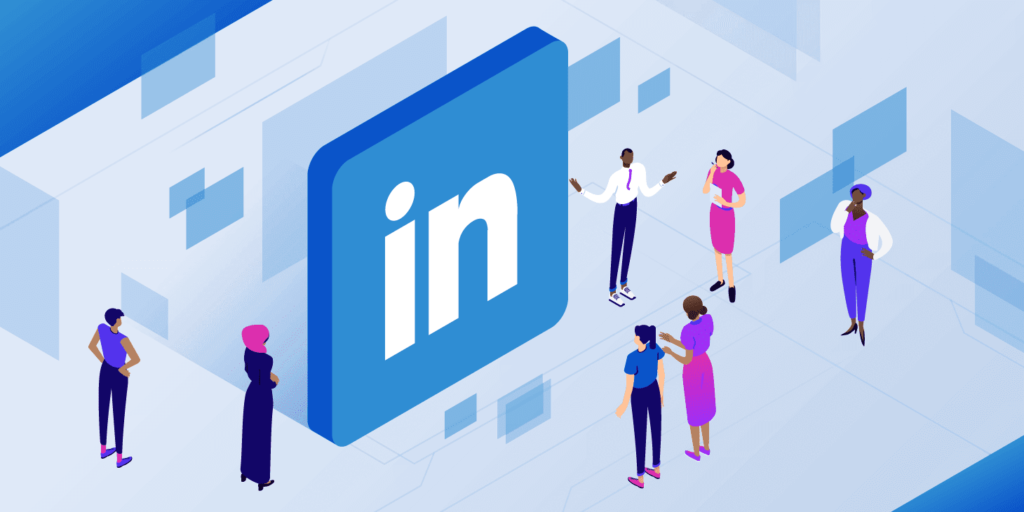
Yet, another very underused function of LinkedIn is sharing and promoting content.
The professionals that frequent LinkedIn are looking for high quality content. Since LinkedIn’s content curation is still underused and has little competition, sharing good content will be rewarded by being pushed more in LinkedIn’s search engine.
The last recommended platform is Reddit. The platform draws 330 million people a month, 26.4 million American users daily, and is one of the best places for content to go viral.
A fair warning though: creators that overly promote their content will instantly be shadowbanned. Being shadowbanned is the worst thing to get hit with on Reddit, since no one else will see a creator’s content from now on.
In short: avoid being Shadowbanned on Reddit.
A general rule on Reddit is to contribute to 90% in sharing and commenting on the platform and 10% sharing your own content. Reddit is very anti-marketing and anti self-promotion, so promoting oneself is the worst way to approach this platform.
Better yet, getting another person to share the video on Reddit is preferred. If another person shares a video on Reddit voluntarily, that shows that the video is good quality.
5. Create Educational Content
One of the best forms of content to create for any YouTube channel is educational content. It’s one of the most efficient, fastest ways to grow a new channel.
This type of content is especially good for new channels, since viewers generally don’t care about a channel’s subscriber count.
Rather, these viewers look for answers to their questions, as well as good, thoughtful content. “How to” videos, tutorials, and video essays form the backbone of this video content and help people upfront.
Because of this, some of the most popular videos fall into this category.

Thumbnail Credits: Medium
Solve A Pain Point
If a channel can solve a viewer’s pain point, they’ll most likely subscribe to the channel. This is because they gave something for free and built trust right away.
It’s no surprise that many new channels that focus on educational content grow a lot faster than other mediums.
Since there are millions of searches a day on educational content, new channels can jumpstart their growth by doing this content. For a channel in the YouTube growth niche, educational videos on “How to develop an engaged community,” “How to create videos with a full time job,” or this very topic of “Growing a YouTube channel from 0 to 1000 subs” are excellent pieces of content.
This type of content is incredibly helpful, builds trust, and solves a problem.
On the other hand, avoid doing content that doesn’t accomplish one of three above. Popular content such as vlogging and Let’s Plays (for gamers) are bad for new channels.
People won’t find a new channel in search, since it’s brand new. Even if they do find a particular new vlog or Let’s Play channel, most people would rather watch a much bigger channel. This is because of social proof, with an established channel’s much higher sub count.
By doing educational content, new content creators can shortcut the growing pains stage. It’s a lot easier for new channels to gain new subs, build trust, and help people by solving a problem.
6. Quality Content > High Production Value
Having quality content is much better than having high production value in your videos.
What is quality content? It’s content that provides value to the viewer. The video can be funny, entertaining, or educational (see point 5 above).
If the video adds value and does not mislead viewers, then it is good, quality YouTube content.
Where most newcomers get confused is they feel their first videos should be highly-polished productions that come straight from a Marvel movie. That great content means spending a lot on equipment. That a quality video = high production value.
This is the far from the truth.

Thumbnail Credits: Vtrep
Start With The Bare Minimum
While having a polished, well-edited video helps, most quality videos are just standard cuts, containing few graphics, some text, and simple background music (or even no music). Many of these videos don’t have an intro screen, nor an outro screen.
Many quality videos are also shot with a smartphone and use sunlight as their lighting source. YouTubers film themselves and let their personality and voice carry the video. Most YouTubers DIY (do it yourself) much of their video production even when they’ve become bigger channels.
Yet, despite the polished production and slick editing of a more professional video, these videos are highly entertaining, add a ton of value, and get a lot of views.
The truth is most new YouTubers start with little to no video shooting or editing experience, yet are capable of creating quality content.
Another truth bomb: your video’s lighting and even video quality can be decent when making a quality video.

One recommendation is investing in good sound. Buying a Rode mic or pin mic or a Blue Yeti for podcasting is a good purchase.
People will watch so-so video quality with excellent sound. At the very least, that video can be turned into a podcast.
But people won’t watch a video with great video quality and crappy sound.
7. Consistency Is Important
Consistency is key in growing a YouTube channel.
Newcomers should treat their uploading schedule like a TV show. With a TV show, an episode is released every week at the same time.
TV watchers know when to catch a show and reserve that time slot to watch their favorites.

Thumbnail Credits: YouTube – Roberto Blake
YouTubers should follow this same rule. Normally, the most consistent YouTubers post a video every week.
But some YouTubers may be busier with work, family, and school and can only release YouTube videos every two weeks or so.
Whatever schedule a creator chooses – once a week, once every two weeks, once every month, etc. – viewers will show up for every new video as long as the creator is consistent in uploading videos.
8. Create Longer Videos
Creating longer videos is key to growing a strong, successful YouTube channel.
The biggest reason for making longer videos is better monetization through Google Adsense.
Videos that are more than eight minutes long can place more than one ad break in videos. YouTubers have control over where they place their ads and how many they want to insert in the video.
It’s a good idea not to go overboard on placing too many ads, as viewers will get annoyed by too many and leave your video.
Videos shorter than eight minutes can only place one ad. YouTubers also have no control over where ad is placed, as it’s random.
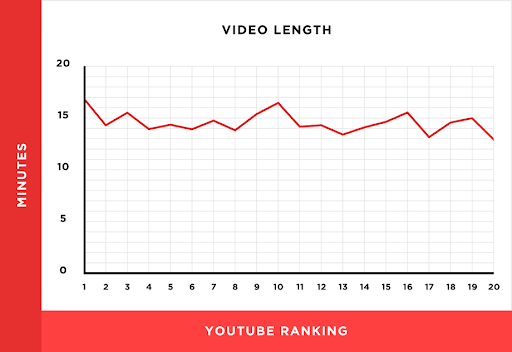
As mentioned, to even place ads on a video, YouTube channels need to have 1000 or more subscribers.
Longer Videos Often Rank Higher In YouTube's Algorithm
Outside of monetization, longer videos outperform shorter ones.
Studies show that 14-18 minute videos or longer frequently rank much higher than shorter videos. So even though YouTube creators can place multiple ads if they meet the eight minute minimum, having 10+ minute videos is recommended.
The reason for longer videos is that YouTube wants people to stay on its platform as long as possible. When users stay on YouTube longer, YouTube can show more ads, which makes the company more money.
The content that keeps viewers on YouTube longer is, yes, long-form videos. When creators make lengthy, 14-18 minute videos, YouTube rewards them. The platform starts pushing more of their videos through to users with the YouTube algorithm, as well as increases a video’s ranking in the search results.
So while longer videos take a good amount of time to make, the payoffs in better ad revenue and SEO are well worth it.
------
Other Suggestions
The next set of suggestions are also useful in growing a channel. While I wouldn’t say these suggestions are as important as the ones mentioned above, they do help in further optimizing a YouTube channel.
But for now, here are some more suggestions:
- Having a call-to-action (CTA)
- Having end screens
- Creating playlists
- Responding to comments
- Commenting on other YouTuber’s videos
- Embedding videos on other websites (or your own)
- Number of subscribers
- Having pop ups to ask people to subscribe
- Having bloggers cover you
- Doing YouTube live (or Twitch)
- Creating lengthy video descriptions
- Getting videos to be noticed on YouTube’s sidebar
- Being more active on social networks / social media
- Using HD screenshots for your thumbnails
- Using annotations to make your video more watch friendly
- Doing video marketing
- Having a template for video scripts, shooting, and editing to make videos much faster
- Creating Evergreen content (This one is very important)
The last one, creating evergreen content, deserves a separate article on its own.
As the bullet list shows, there’s a lot of ways to approach YouTube creation and marketing. Stick with the main strategies in this article first before branching out, so you don't get overwhelmed.
CTR And Watch Time Are That Important
Although I briefly mentioned them – as these topics are better suited to a more lengthy article – CTR and watch time are the most important factors on YouTube.
Having a good CTR and high watch time tells YouTube to promote your videos more on people’s recommended feeds. This is why see some videos are pushed often on the recommendation page and why some YouTubers grow fast.
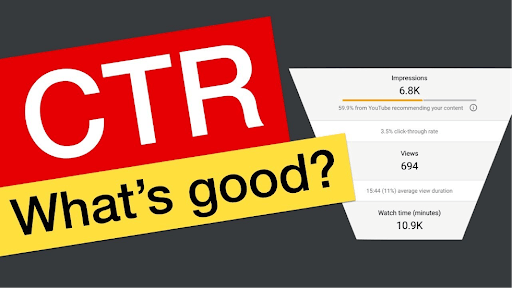
Thumbnail Credits: YouTube
Having a good understanding of CTR and watch time also helps in creating future videos and predicting their success.
A high watch time shows YouTube that a video’s audience retention is high. This tells the YouTube algorithm to promote the video more on its suggested videos page and to show it more often in the search results.
In turn, YouTube’s search engine and recommendation feed introduces that YouTuber’s videos to new audiences. This leads to more people checking out their videos and subscribing.
The strategies above cater to creating videos with higher CTR and watch time, setting up new video creators in a good position to succeed on YouTube.
Wrapping It Up
Growing a YouTube channel is hard. With more channels coming out each year, it’s tough to stand out among the crowd, especially in 2021.
But it’s very doable to create a thriving channel even today. It’s always most difficult starting out.
It takes some hard work, knowing the best ways to grow a YouTube channel, and knowing the realities of YouTube growth.
I won’t lie: It’s a challenge to grind for those 1000 YouTube subscribers.
For those ready for the challenge and ready to get started, let's get those 1000 subscribers!
Related Read: How To Grow A YouTube Community
